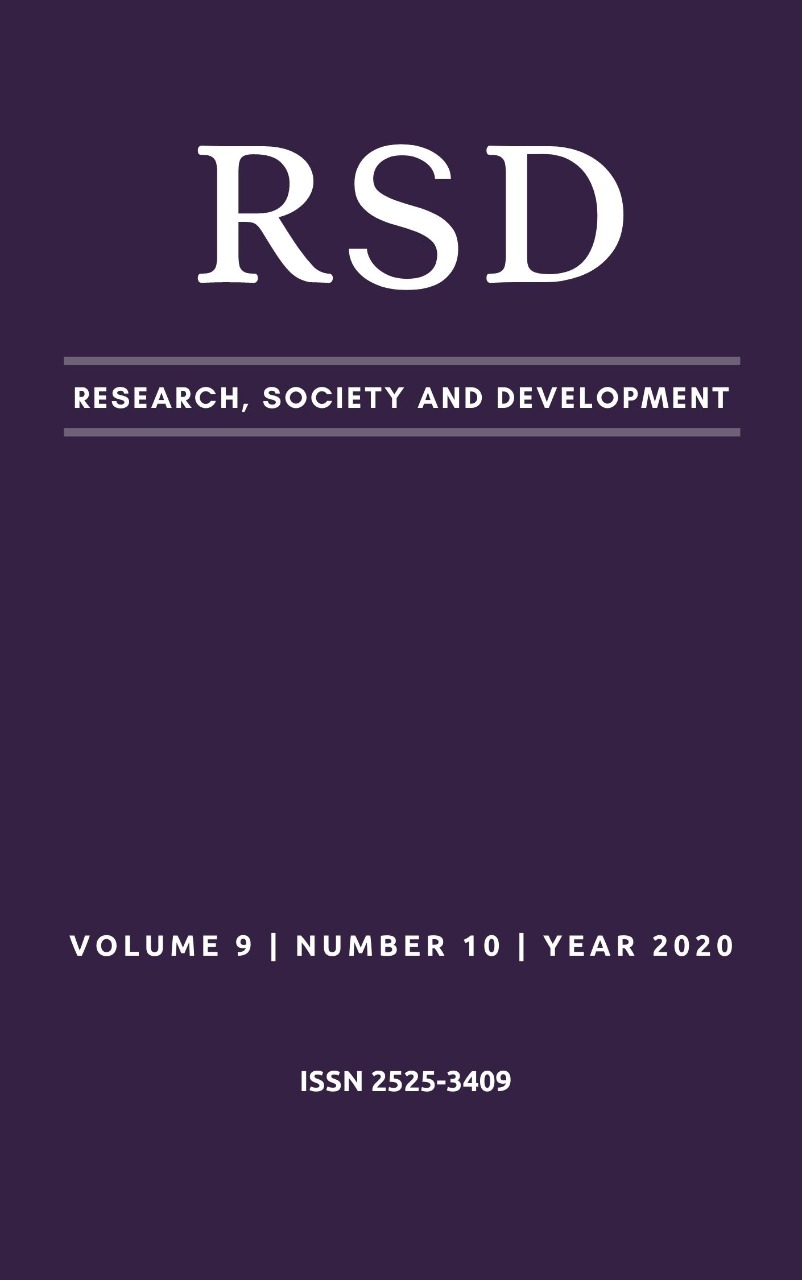Ingestive behavior of cattle in different production system – a systematic review of scientific studies
DOI:
https://doi.org/10.33448/rsd-v9i10.8705Keywords:
Beef cattle; Dairy cattle; Feeding; Ruminating; Idle.Abstract
The ingestive behavior study is an important tool for diet evaluation and the relationship of the animal with production system. The objective this study was to analyze the ingestive behavior of cattle in grazing and feedlot for some variables, under experimental conditions. Scientific papers published from September 2004 to March 2018 were analyzed using the systematic review framework. Of the 88 papers initially selected, after applying new selection criteria, 35 articles constituted the information bank, with 153 information and 1079 cattle in experiments. The study showed statistical difference (P <0.0001) to analyzed parameters between cattle production systems. The average time found, in minutes per day, for feeding was higher in pasture systems (520.13) than in confined systems (249.39). The time spent by animals in rumination and idle was greater in confined systems (470.28 and 691.86, respectively) than in pasture (319.21 and 360.50, respectively). The production systems have an influence on the ingestive behavior of cattle. The production systems meddle the ingestive behavior of cattle. However, a diet used in different production systems was main responsible for the change in the behavior of animals, proving to be important to advance studies on the topic.
References
Ministério da Saúde. Diretrizes metodológicas: elaboração de revisão sistemáticas e metanálise de ensaios clínicos randomizados. 1° edição. Brasília, 2012.
Bürger, P. J., Pereira, J. C., Queiroz, A. C., Silva, J. F. C., Valadares. S. C., Cecon, P. R., Casali & A, D, P. (2000). Comportamento ingestivo em bezerros holandeses alimentados com dietas contendo diferentes níveis de concentrado. Revista Brasileira de Zootecnia, v.29, n.1, p.236-242.
Carvalho, T. B. & De zen, S. (2017) A cadeia de Pecuária de Corte no Brasil: evolução e tendências. Revista IPECEGE. v. 3, n. 1., p. 85-99.
Embrapa. Informativo Nespro e Embrapa Pecuária Sul. (2016). Acesso em: 09 set. 2018. Recuperado de https://www.embrapa.br/documents/1355035/1529130/Informativo+Nespro+2016/31bff5ec-7c18-3978-0977-fa81e9a443db
Embrapa. O mercado de leite 2017. (2017). Acesso em: 13 nov. 2018. Recuperado de https://ainfo.cnptia.embrapa.br/digital/bitstream/item/184516/1/CT-118-O-Mercado-do-Leite-em-2017.pdf.
Embrapa, Anuário Leite 2018. (2018). Acesso em: 13 dez. 2018. Recuperado de https://www.embrapa.br/busca-de-publicacoes/-/publicacao/1094149/anuário leite.pdf.
Fraser, A. F. Comportamiento de los animales de granja. (1980). Zaragoza: Acribia, 291p.
Hafez, E. S. G. & Lindsay, D.R. (1965) Behavioural responses in farm animals and their relevance to research techniques. Animal Breeding Abstraction, Farnham Royal, v. 33, n. 1, p. 1-16.
Hemsworth, P. H.; Coleman, G. J. Human-Livestock Interactions: The Stockperson and the Productivity and Welfare of Intensively Farmed Animals. (1998). CAB International: New York.
Malafaia, P., Barbosa, J. D., Tokarnia, C. H. & Oliveira, C, M, C. (2011). Distúrbios comportamentais em ruminantes não associados a doenças: origem, significado e importância. Pesquisa Veterinária Brasileira. v. 31, n. 9. P.781-790.
Marques, J. A. (2000). O stress e a nutrição de bovinos. Maringá: Imprensa Universitária, 42 p.
Mertens, D. R., Regulation of forage intake. In: Fahey, G. C., Collins, Mertens, D. R.; Moser, L. E. (1994). Forage Quality, Evaluation, and Utilization. ed. American Society of Agronomy, Crop Science Society of America, and Soil Science Society of America, Madison, WI, p. 450-493.
Newberry R. C. (1995). Environmental enrichment - increasing the biological relevance of captive environments. Applied Animal Behavior Science., n. 44, p.229-243, 1995.
Oliveira, C. B., Debortoli, E. C. & Barcellos, J. O. J. (2008). Diferenciação por qualidade da carne bovina: a ótica do bem-estar animal. Ciência Rural., v. 38, n. 7, p. 2092-2096.
Pereira, A. S., Shitsuka, D. M., Pereira, F, J & Shitsuka. R. (2018). Metodologia da pesquisa científica. Acesso em: 03 de out. 2020. Recuperado de https://repositorio.ufsm.br/bitstream/handle/1/15824/Lic_Computacao_Metodologia-Pesquisa-Cientifica.pdf?sequence=1
Rêgo, A. C., Oliveira, M. D. S., Signoretti, R. D., Dib, V. & Almeida, G. B. S. (2014). Comportamento Ingestivo de Vacas Leiteiras Alimentadas com Silagem de Milheto ou Milho. Bioscience Journal. v. 30, n. 4, p. 1149-1157.
Ridley, M. (1995). Animal behavior: an introduction to behavioral mechanisms, development, and ecology. Boston: Blackwell Scientific, 288p.
Sampaio, R. F. & Mancini M. C. (2007). Estudo de revisão sistemática: um guia para síntese criteriosa da evidência científica. Revista Brasileira de Fisioterapia. v.11, n. 1, p. 83-89.
Van Soest, P. J. (1994). Nutritional ecology of the ruminant. 2°edição. Ithaca: Cornell. 476p.
Downloads
Published
How to Cite
Issue
Section
License
Copyright (c) 2020 Yan Lee Farina Guimarães; Elísio De Camarfgo Debortoli; Juliana Dos Santos; Edenilse Gopinger

This work is licensed under a Creative Commons Attribution 4.0 International License.
Authors who publish with this journal agree to the following terms:
1) Authors retain copyright and grant the journal right of first publication with the work simultaneously licensed under a Creative Commons Attribution License that allows others to share the work with an acknowledgement of the work's authorship and initial publication in this journal.
2) Authors are able to enter into separate, additional contractual arrangements for the non-exclusive distribution of the journal's published version of the work (e.g., post it to an institutional repository or publish it in a book), with an acknowledgement of its initial publication in this journal.
3) Authors are permitted and encouraged to post their work online (e.g., in institutional repositories or on their website) prior to and during the submission process, as it can lead to productive exchanges, as well as earlier and greater citation of published work.

